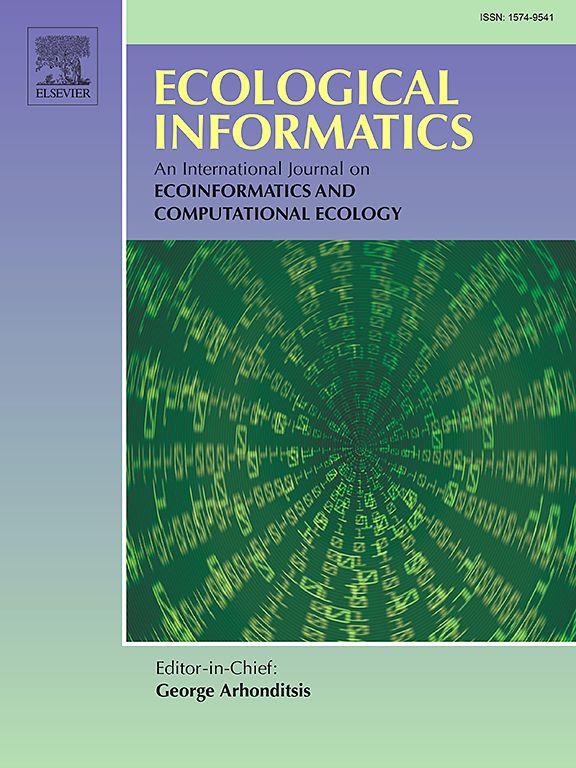Detecting stress parameters in dromedary camels using computer vision
IF 5.8
2区 环境科学与生态学
Q1 ECOLOGY
引用次数: 0
Abstract
Dromedary camels exhibit behavioral responses influenced by both physiological conditions and environmental factors. Poor health, physical or emotional, can manifest as behavioral abnormalities. This study aims to build a video-based stress detection model by analyzing camel behavior under different conditions. Camels from Marmoom Farm, UAE, were observed over eight days: six days included interventions such as blood collection and/or intensive training, and two days followed their typical routine. Video footage was captured from three cameras positioned around the enclosures and pens. Using the YOLOv8 architecture, we developed a model to classify normal behaviors - “standing”, “sitting”, “sleeping” and stress-related behaviors - “distressed sitting”, “moving around uncontrollably”, “pulling on rope”. The model obtained a precision of 0.971, recall of 0.959, mAP50 of 0.985, and mAP50–95 of 0.924. Four camels were closely monitored to analyze correlations between behavioral stress indicators and activities such as blood sampling, race training, and environmental conditions. Results indicate that while high-intensity training often induces stress, individual endurance levels and external factors like weather also significantly influence stress responses. This study presents a novel, automated method for early stress detection in camels, contributing to improved animal welfare and farm management practices.
利用计算机视觉检测单峰骆驼的应激参数
单峰骆驼表现出受生理条件和环境因素双重影响的行为反应。身体或情绪上的健康状况不佳可能表现为行为异常。本研究旨在通过分析骆驼在不同条件下的行为,建立基于视频的应力检测模型。对来自阿联酋Marmoom农场的骆驼进行了为期8天的观察:6天包括采血和/或强化训练等干预措施,2天遵循其典型常规。安装在围栏和围栏周围的三个摄像机拍摄了视频片段。使用YOLOv8架构,我们开发了一个模型来分类正常行为-“站立”,“坐着”,“睡觉”和与压力相关的行为-“痛苦地坐着”,“无法控制地四处走动”,“拉绳子”。模型的精密度为0.971,召回率为0.959,mAP50为0.985,mAP50 - 95为0.924。研究人员对四只骆驼进行了密切监测,以分析行为压力指标与血液采样、比赛训练和环境条件等活动之间的相关性。结果表明,虽然高强度训练经常引起压力,但个人耐力水平和天气等外部因素也会显著影响压力反应。本研究提出了一种新颖的自动化方法,用于骆驼的早期应激检测,有助于改善动物福利和农场管理实践。
本文章由计算机程序翻译,如有差异,请以英文原文为准。
求助全文
约1分钟内获得全文
求助全文
来源期刊

Ecological Informatics
环境科学-生态学
CiteScore
8.30
自引率
11.80%
发文量
346
审稿时长
46 days
期刊介绍:
The journal Ecological Informatics is devoted to the publication of high quality, peer-reviewed articles on all aspects of computational ecology, data science and biogeography. The scope of the journal takes into account the data-intensive nature of ecology, the growing capacity of information technology to access, harness and leverage complex data as well as the critical need for informing sustainable management in view of global environmental and climate change.
The nature of the journal is interdisciplinary at the crossover between ecology and informatics. It focuses on novel concepts and techniques for image- and genome-based monitoring and interpretation, sensor- and multimedia-based data acquisition, internet-based data archiving and sharing, data assimilation, modelling and prediction of ecological data.
 求助内容:
求助内容: 应助结果提醒方式:
应助结果提醒方式:


